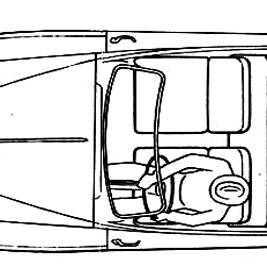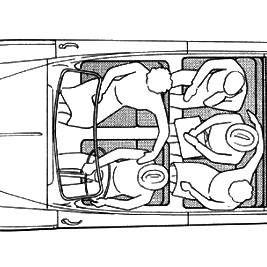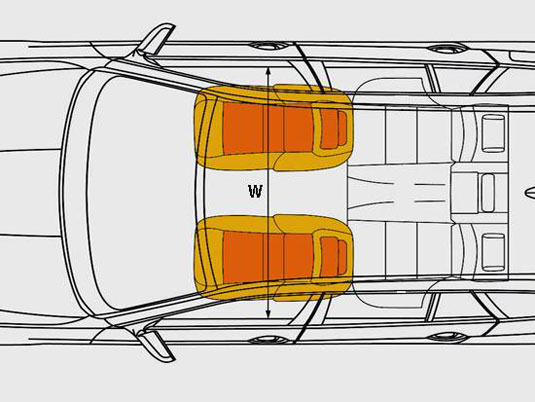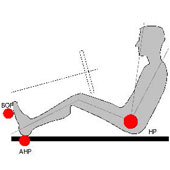.
After defining the position of the driver on the seat, all other interior and structural components inside the vehicle are arranged accordingly with the intention to provide sufficient clearance dimensions around him/her. This process relies on a human factor database. Larger anthropometric data (95th percentile value) are generally considered for this purpose.
Spatial arrangement includes the positioning of the driver’s seat and passenger’s seat in the allocated space on the side, and the arrangement of various controls/components according to seating arrangements.
In this module leg room, headroom and lateral space are to be described in brief.
Legroom:
The sufficient space for keeping the legs of the driver/passenger in a comfortable position in an automobile. Proper legroom enables drivers to access structural components with ease. There should not be any obstacle to keep feet comfortable and at the same time for accessing controls like pedals (brake/accelerator/clutch).
Measurement of horizontal distance between H-Point and AHP is useful for this purpose. Care should be taken to ensure that any parts of the lower body like thighs/knees should not touch with steering wheel or dashboard or any other component.
Headroom:
The height. It is the vertical clearance space above the head of the driver/passenger in an automobile. A minimum 5.0 cm head clearance for jolt in a vehicle is recommended (Galer 1987, Woodson et al. 1992). In vehicular workstations, available head clearance must be sufficient for wearing and removing the helmet in a seated posture.
Lateral Space:
Lateral space is the space pertaining to the side of driver/passenger. Lateral space is important for physical or psychological comfort.
Conventionally, 95th percentile bi-deltoid breadth of the population with an additional allowance of 10% on each side can be considered adequate for lateral clearance during normal sitting side by side (fig. 14).


Fig. 14. Lateral clearance for sitting side by side
Dimensional Consideration of Lateral Space:
The overall distance between the inner part of doors “W” is the output of manipulated anthropometric data of lateral between two seats, and the distance from seat’s edge to the door. Spaces required for comfort (Fig. 15). This ‘W’ is composed of the width of seats and distance.

Fig. 15 Top view of a car to show lateral spaces for the front seats.

